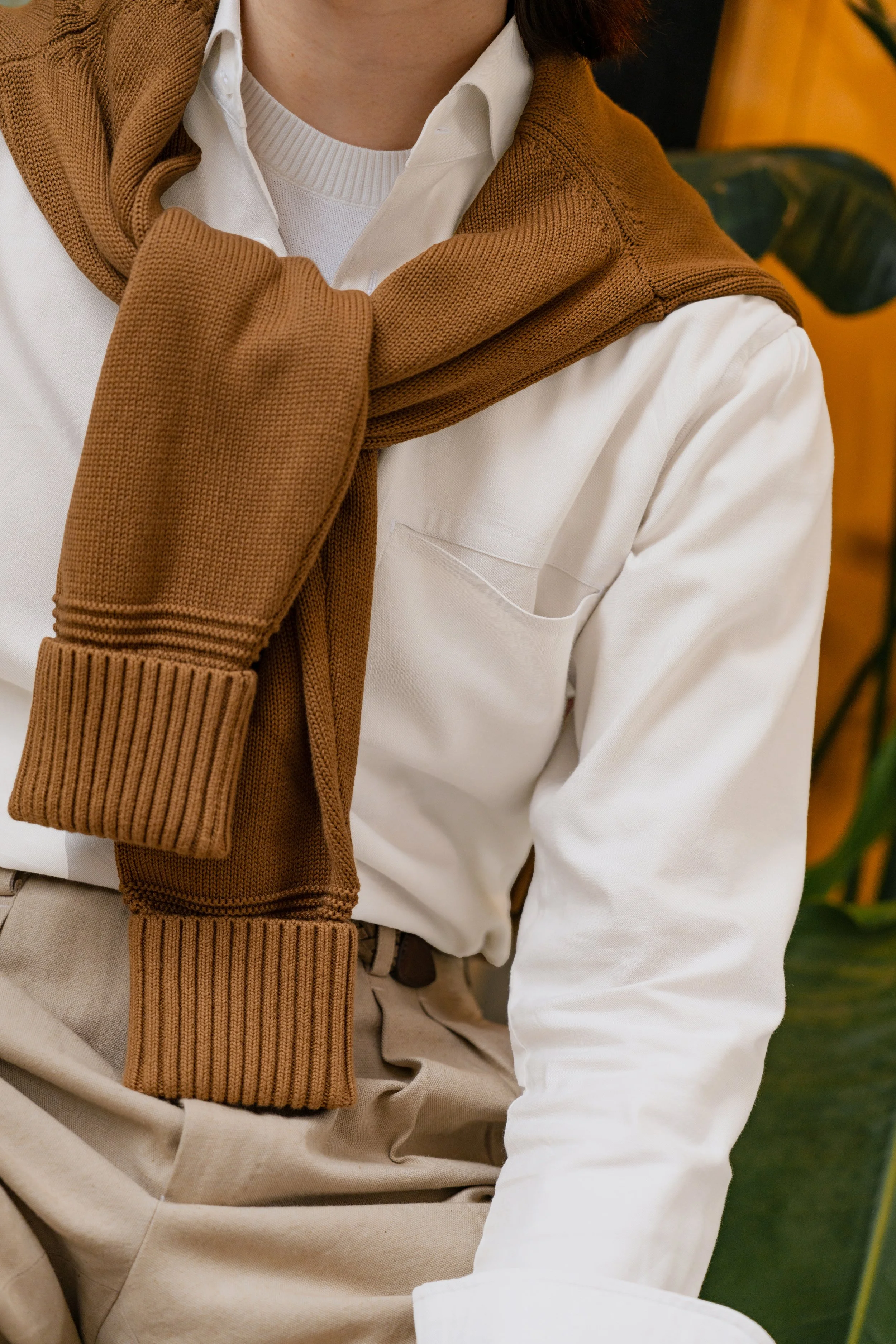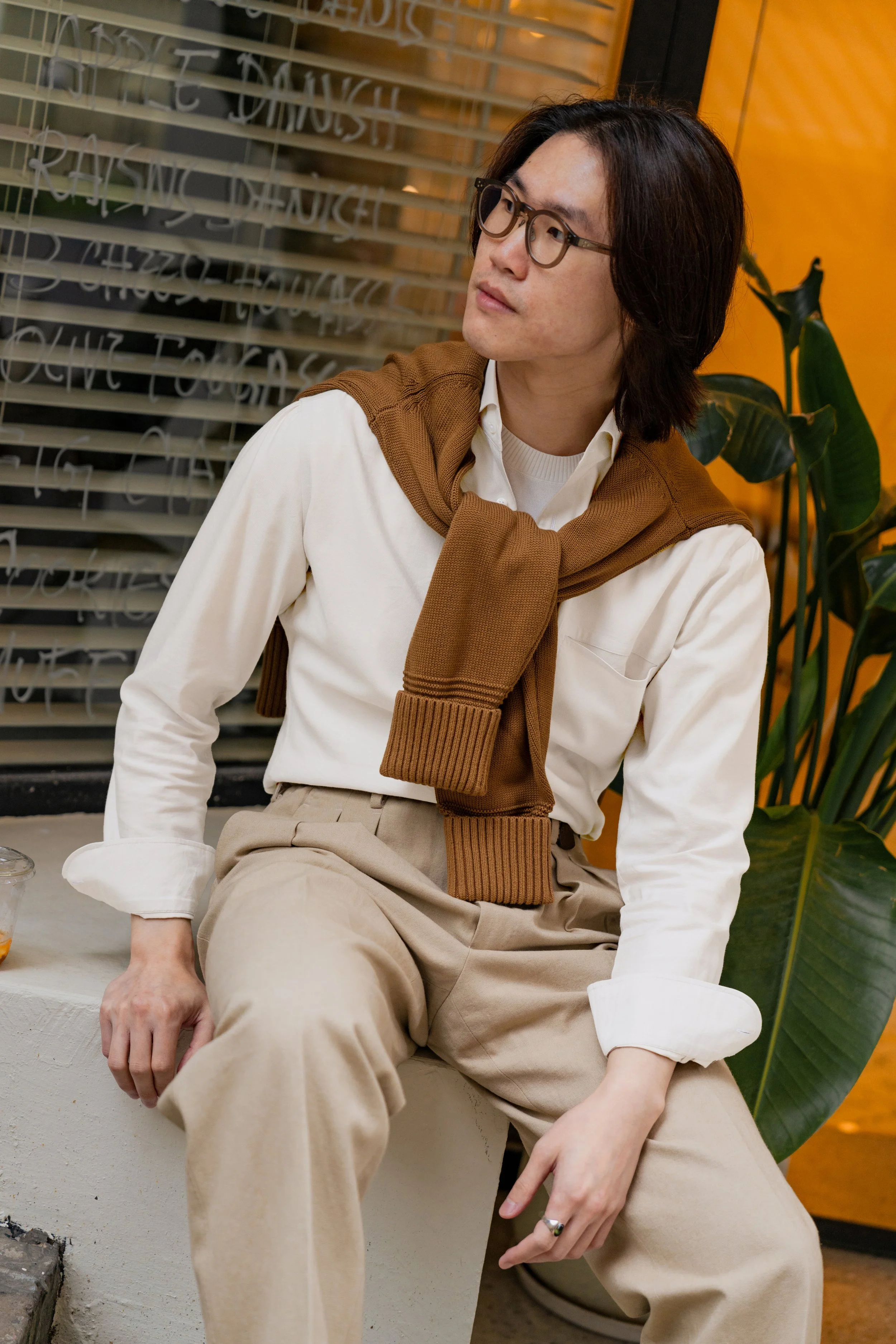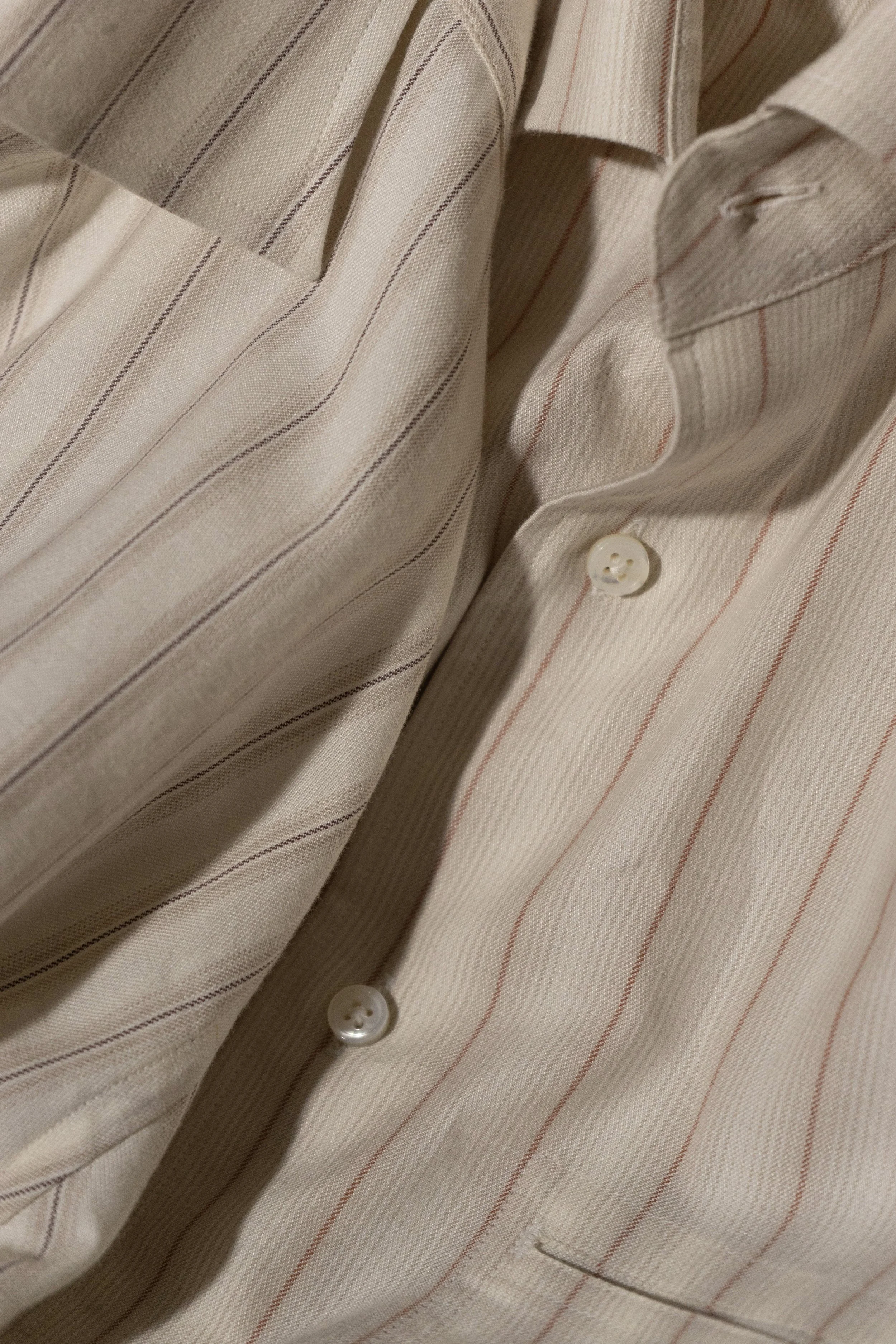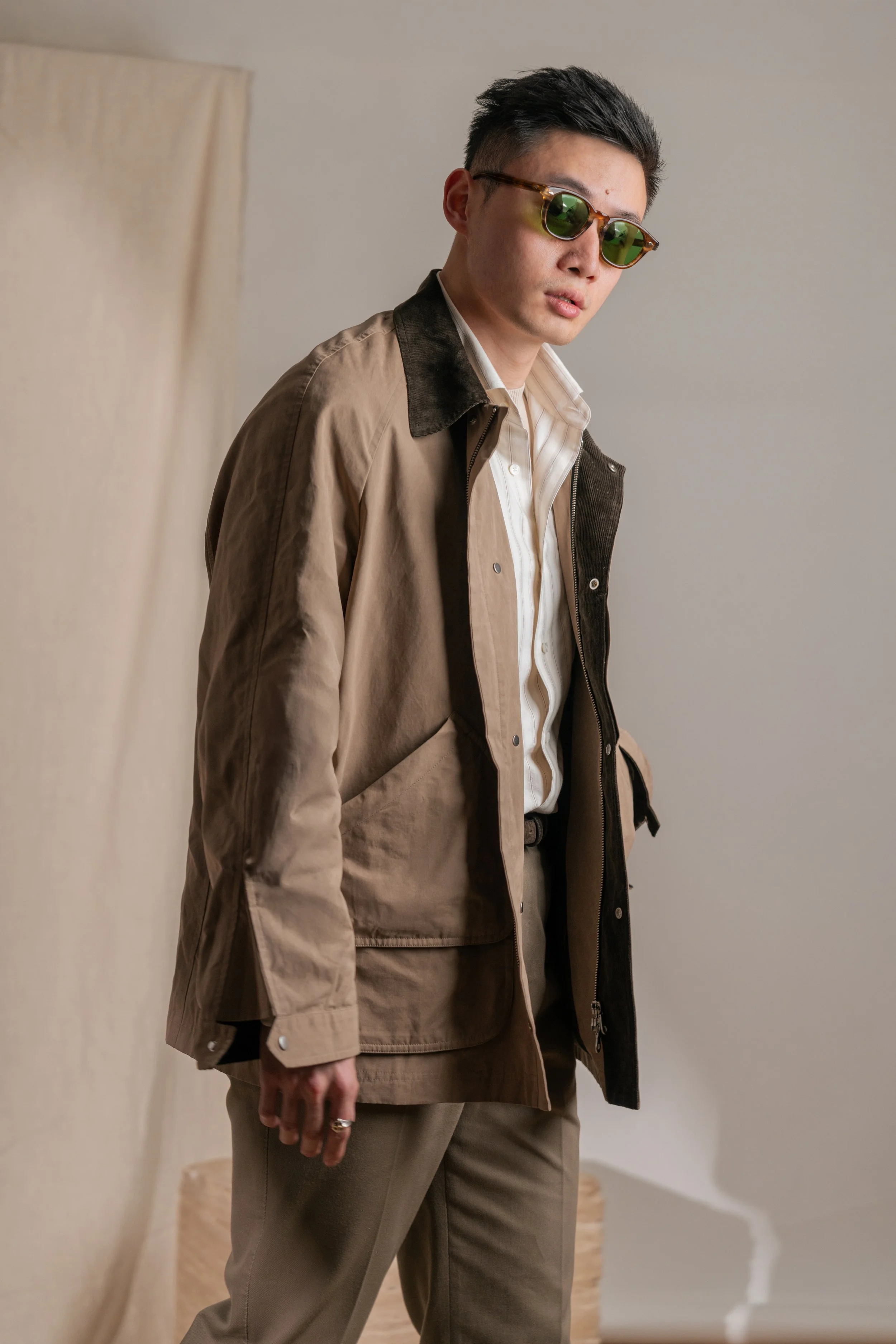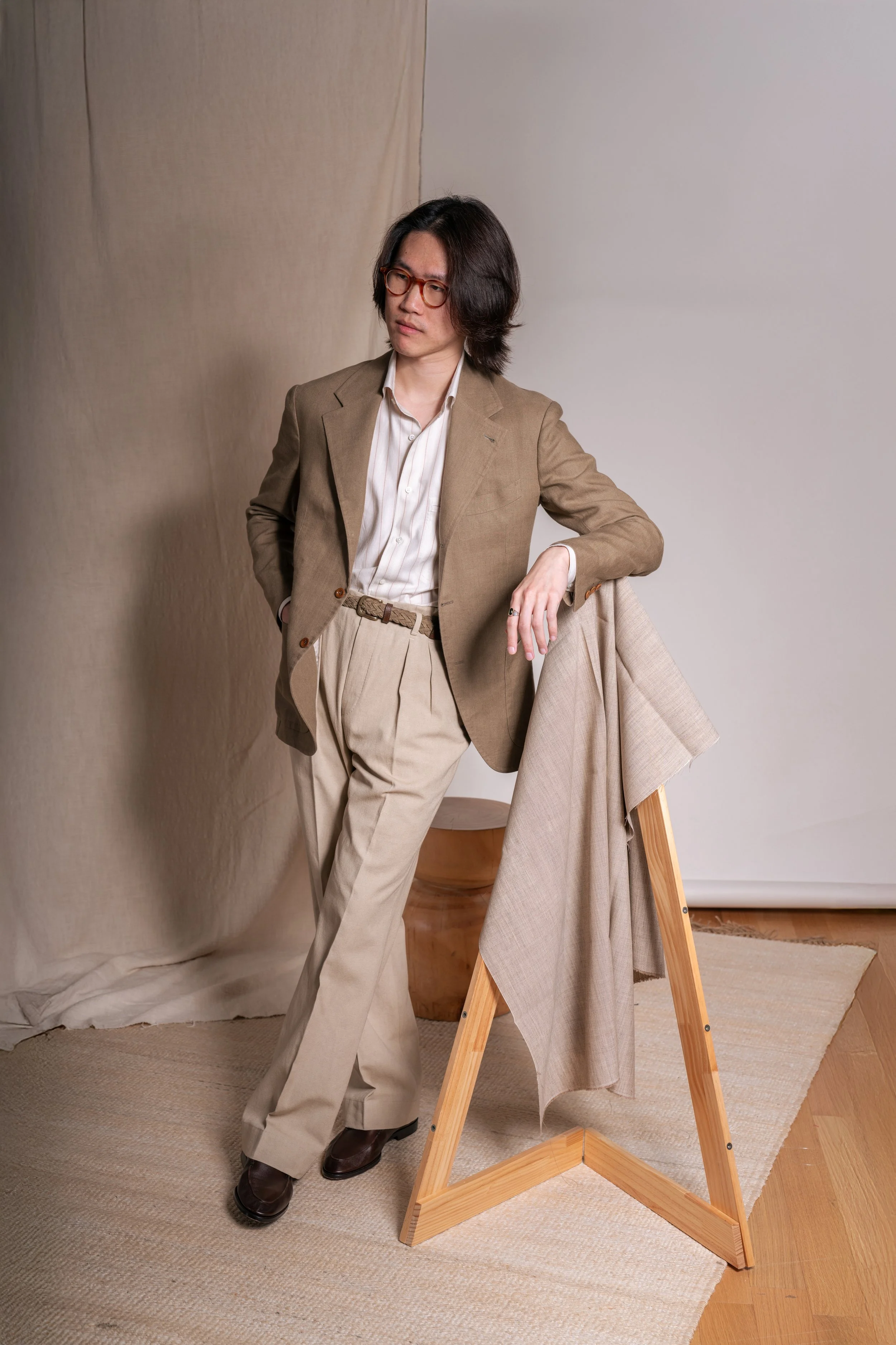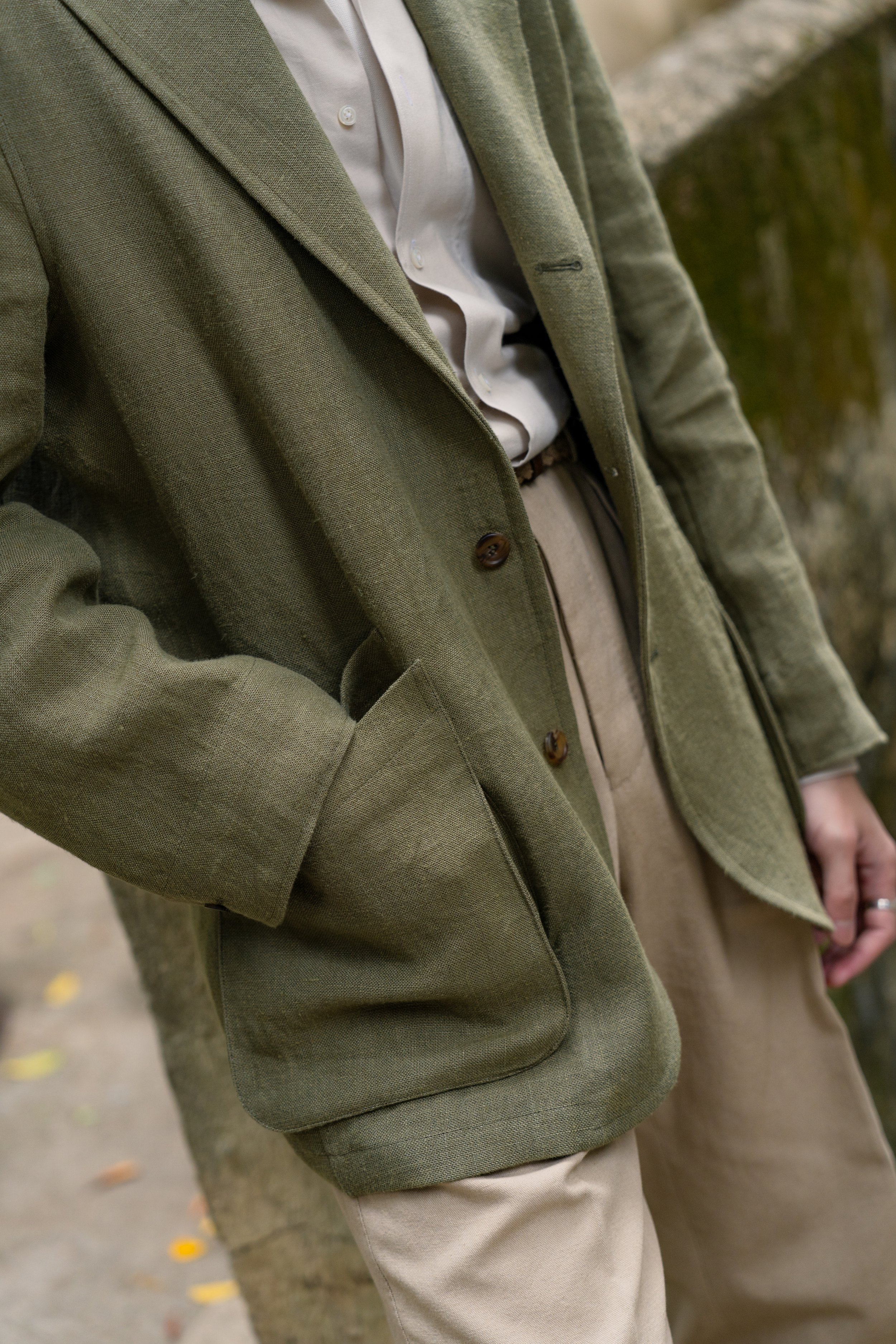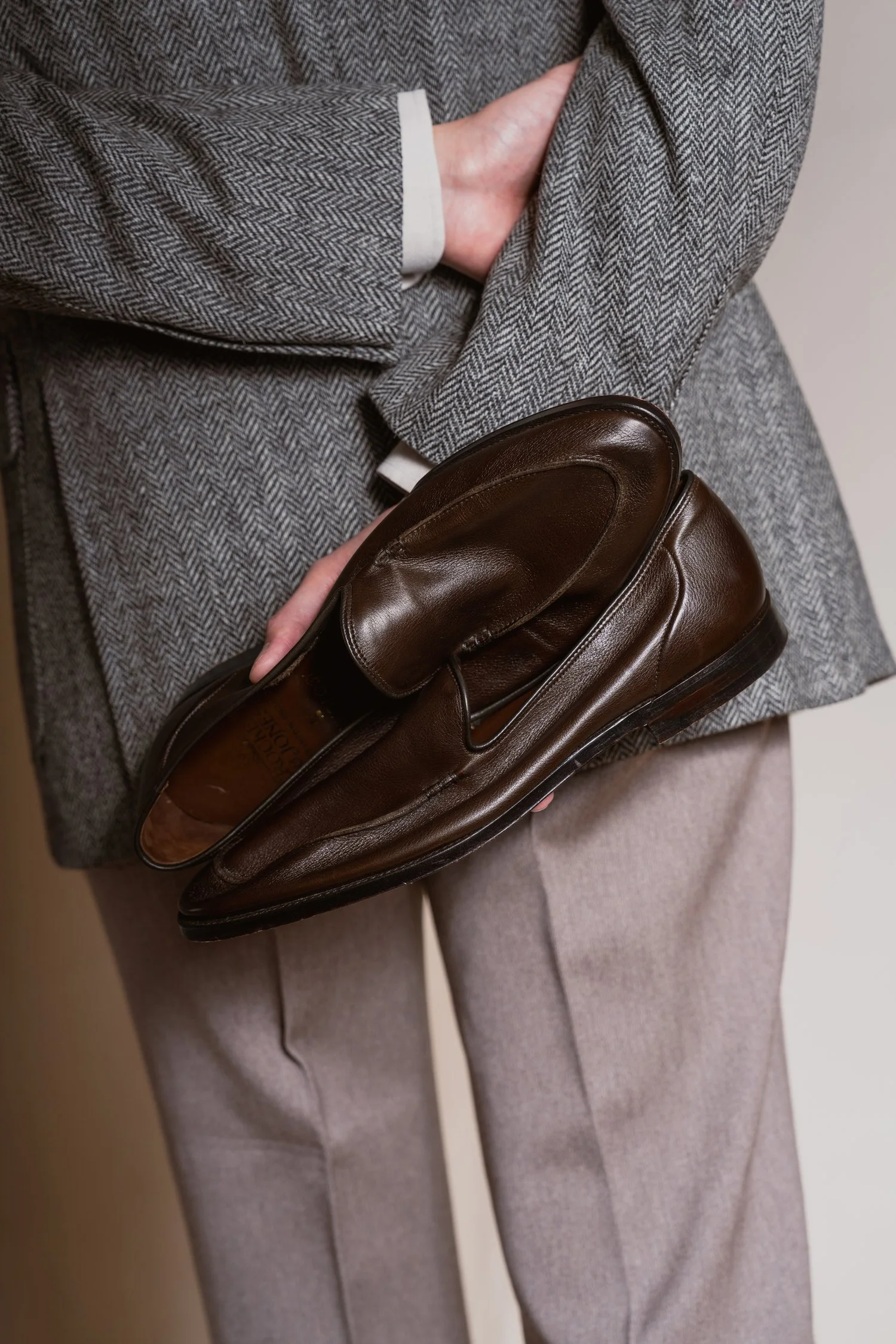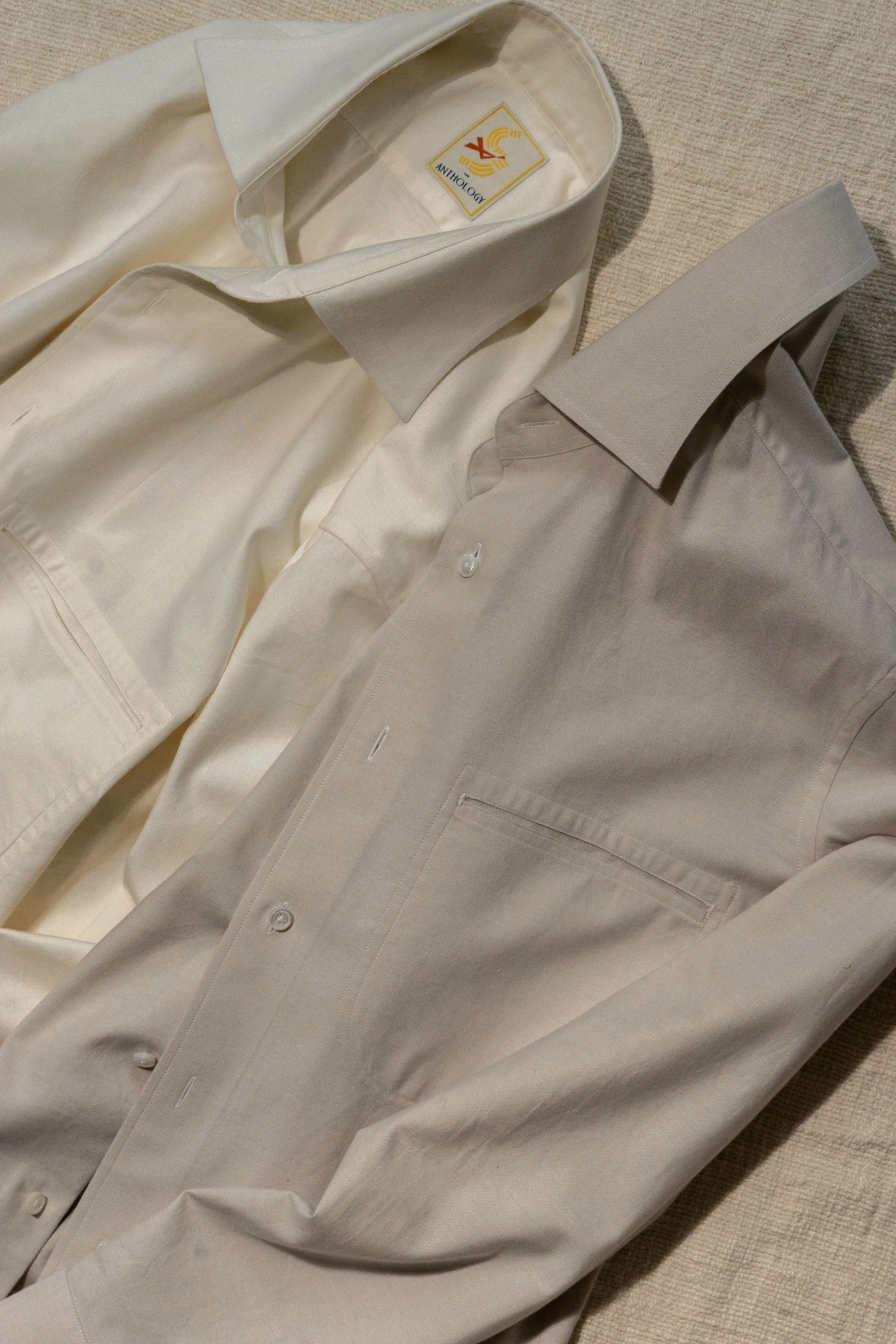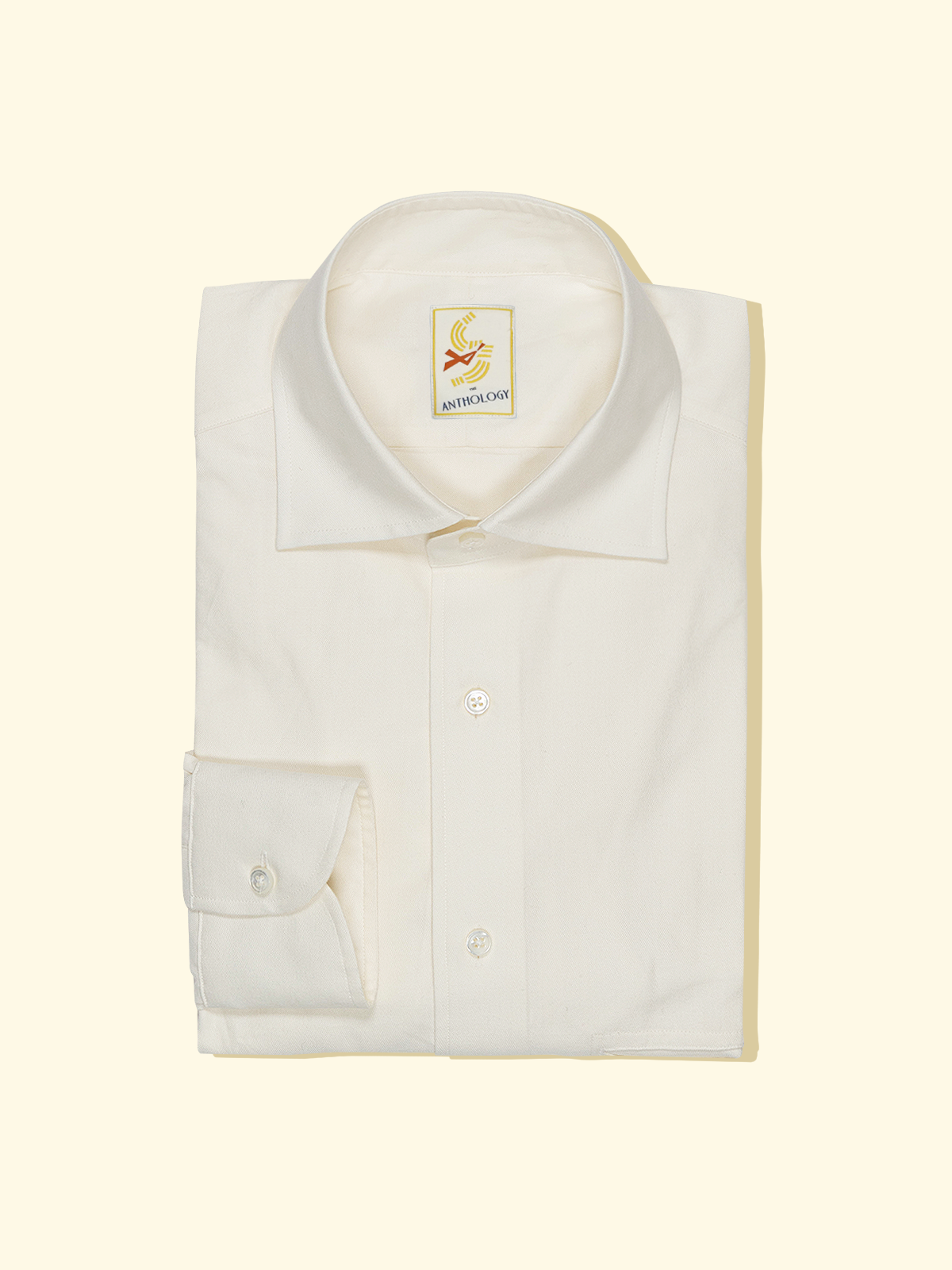Cotton/Silk/Merino Shirts: A Journey Through Paintings
Cloth, to us, is never just material—it’s memory, instinct, emotion. When sourcing fabrics, something unusual happens: our eyes catch light in its threads, our hands note the weight, the grain, the fall. And with that, stories begin to form. Sometimes recognisable, sometimes still waiting to be told. This new shirting series emerges from such moments—where vision and tactility spark something deeper, akin to walking through a gallery or preparing a cherished meal with someone new.
The wear experience is a vital part of the narrative with most fine clothing, but this series in particular. Woven from pure cotton with a brushed finish, blended with Australian merino for warmth and body, and a delicate touch of silk for that quietly luxurious edge. The result is fluid, breathable, and remarkably smooth against the skin. The silk lends a subtle tactile hand and aids in moisture control, while the merino rounds it off with comforting warmth. It’s a textile composition chosen for both elegance and pleasure. But the most remarkable thing about this is the weight of the cloth. It is lightweight, unliked any other brushed cotton shirts that at are designed for colder seasons, this is quite genuinely the all-year-round piece.
The palette is tonal and contemplative—natural hues that mirror earth and canvas. Each shirt carries soft waves of barely-there contrast in the form of shadow stripes, giving depth without declaration. These are casual shirts at heart, but ones that lean toward the poetic.
The Off-White Shirt: A Blank Canvas
We often think of shirting as the foundation of dressing. But this one, quite literally, takes on the role of a blank canvas. The Off-White Shirt is not a stark, clinical white—it’s softened, lived-in, deliberately gentle. The tone has a warmth to it, closer to raw paper or sunlit muslin than bleached cotton.
Just as artists stretch and prime their canvas before a single brushstroke, we’ve treated this shirt with the same intention. It’s free from distraction yet full of potential—meant to be worn, marked by time and experience. The subtle shadow stripes, in hues we’ve dubbed pencil and red pen, mimic those early gestures on a sketchpad: exploratory, intuitive, quietly confident.
It wears beautifully with denim or textured trousers, layered beneath a jacket or left open over a tee. But more than that, it encourages self-expression in how you move, live, and layer—because the wearer becomes the final brushstroke.
The Two Striped Cousins
After the blank canvas comes the first mark. The Two Striped Cousins take that initial step forward—when the artist lifts a pencil or pen and begins to trace the outline of an idea. Subtle shadow stripes in tones we’ve come to call pencil and red pen run quietly across the fabric, like early lines on sketch paper: thoughtful, restrained, suggestive of form but never overdrawn.
These shirts are siblings in spirit—sharing the same composition and hand-feel as their plain counterpart, yet marked with character. The pencil variant is quiet and pensive, while red pen carries a slightly more assertive charm, like an underlined thought. They’re meant to be lived in, worn across moments that might start simple but develop into something meaningful.
Pair with both formal and casual tailoring, they invite the wearer to continue the sketch—to make it their own.
The Oyster Shirt
Oysters have always held a special place in our hearts—rare, refined, and evocative. This shirt captures the nuanced grey tones found in the delicate shells of Gillardeau Rock Oysters Special N°2, renowned for their exceptional quality. The colour palette also draws inspiration from Édouard Manet's 1862 painting Oysters, where the interplay of light and shadow on the oyster shells creates a harmonious blend of greys and whites .
Edouard Manet:Oysters, 1862, oil on canvas, 5 7/16 x 18 7/16 inches.
Courtesy National Gallery of Art, London
Jill Mulleady: Solus Locus, 2018, oil on linen, 37 by 48 inches.
Courtesy Galerie Neu, Berlin, And Gladstone Gallery.
Further enriching this narrative is the influence of painter Haidee Becker, whose depictions of food, particularly those displayed at Bocca di Lupo in Soho, London, capture the 'movement between the inside and the outside.' Her work resonates with our approach—observing and translating the subtle hues and textures of the world into wearable art.
Haidee Becker:Fish, 2008, oil on canvas, 59 x 45 inches.
Courtesy Bocca Di Lupo, Soho, London
Haidee Becker: Meat, 2008, oil on canvas, 59 x 45 inches.
Courtesy Bocca Di Lupo, Soho, London
Details & Construction
One detail we’ve grown particularly fond of is the chest pocket. At first glance, it’s elegantly understated—a jetted finish that hints at tailoring. But its conception was far more whimsical: when sketching it out, we imagined a place to tuck a paintbrush. That image stuck. The notion of an artist mid-process, brush briefly set aside, contemplating their next move. It evokes a quiet kind of utility, one that’s deeply personal rather than performative.
Of course, most won’t carry brushes in their shirts. But that’s beside the point. The pocket is symbolic—a nod to creative tools and those who carry them. Whether pen, glasses, or nothing at all, it serves as a reminder: everyday objects can be a part of the art of dressing, too. Its placement and shape add subtle asymmetry and texture, inviting the eye without disrupting the flow.
The construction marks a quiet departure from our usual offering. With these shirts leaning toward the casual, we’ve chosen the softest interlining for both collar and cuffs—subtle decisions that lend a more relaxed, unfussy character, completing the narrative with quiet intention. Not details to be seen, but to be felt.




